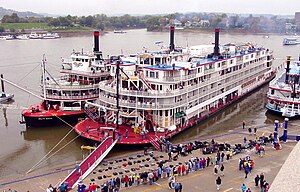
The Mississippi River is the primary river, and second-longest river, of the largest drainage basin in the United States. From its traditional source of Lake Itasca in northern Minnesota, it flows generally south for 2,340 miles (3,766 km) to the Mississippi River Delta in the Gulf of Mexico. With its many tributaries, the Mississippi's watershed drains all or parts of 32 U.S. states and two Canadian provinces between the Rocky and Appalachian mountains. The main stem is entirely within the United States; the total drainage basin is 1,151,000 sq mi (2,980,000 km2), of which only about one percent is in Canada. The Mississippi ranks as the thirteenth-largest river by discharge in the world. The river either borders or passes through the states of Minnesota, Wisconsin, Iowa, Illinois, Missouri, Kentucky, Tennessee, Arkansas, Mississippi, and Louisiana.

A steamboat is a boat that is propelled primarily by steam power, typically driving propellers or paddlewheels. Steamboats sometimes use the prefix designation SS, S.S. or S/S or PS ; however, these designations are most often used for steamships.

A paddle steamer is a steamship or steamboat powered by a steam engine that drives paddle wheels to propel the craft through the water. In antiquity, paddle wheelers followed the development of poles, oars and sails, where the first uses were wheelers driven by animals or humans.

Belle of Louisville is a steamboat owned and operated by the city of Louisville, Kentucky, and moored at its downtown wharf next to the Riverfront Plaza/Belvedere during its annual operational period. The steamboat claims itself the "most widely traveled river steamboat in American history." Belle of Louisville's offices are aboard Mayor Andrew Broaddus, and also appears on the list of National Historic Landmarks.

The Delta Queen is an American sternwheel steamboat. She is known for cruising the major rivers that constitute the tributaries of the Mississippi River, particularly in the American South, although she began service in California on the Sacramento River delta for which she gets her name. She was docked in Chattanooga, Tennessee and served as a floating hotel until purchased by the newly formed Delta Queen Steamboat Company. She was towed to Houma, Louisiana, in March 2015 for refurbishing to her original condition.
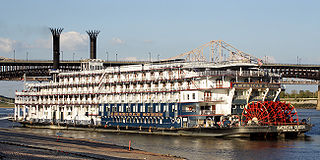
American Queen is said to be the largest river steamboat ever built. The ship was built in 1995 and is a six-deck recreation of a classic Mississippi riverboat, built by McDermott Shipyard for the Delta Queen Steamboat Company. Although the American Queen's stern paddlewheel is indeed powered by a steam engine, her secondary propulsion, in case of an emergency and for maneuverability around tight areas where the paddle wheel can not navigate, comes from a set of diesel-electric propellers known as Z-drives on either side of the sternwheel. She has 222 state rooms for a capacity of 436 guests and a crew of 160. She is 418 feet (127 m) long and 89 feet (27 m) wide.
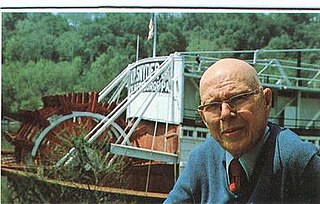
Fredrick Way Jr. was the youngest steamboat captain on the Ohio River and Mississippi River. He was the author of books on the boats that ply the inland waterways. He supervised the flat-bottom, stern paddlewheeler, the Delta Queen, from San Francisco, down the Pacific coast, through the Panama Canal, across the Gulf of Mexico and up the Mississippi and Ohio rivers to Pittsburgh in 1946.

Natchez has been the name of several steamboats, and four naval vessels, each named after the city of Natchez, Mississippi or the Natchez people. The current one has been in operation since 1975. The previous Natchez were all operated in the nineteenth century, most by Captain Thomas P. Leathers. Each of the steamboats since Leathers' first had as its ensign a cotton bale between its stacks.

Delta King is a 285-foot-long sternwheel steamboat (87 m) and the sister ship of Delta Queen, built in Scotland and California for the California Transportation Company's service between Sacramento and San Francisco, California. She entered service in 1927 and continued until 1940. After wartime service with the United States Navy, Delta King served as an accommodation ship at Kitimat, British Columbia in the 1950s and then returned to California for static use at Old Sacramento where she remains as a hotel, restaurant and venue.

Titan Clydebank, more commonly known as the Titan Crane is a 150-foot-high (46 m) cantilever crane at Clydebank, West Dunbartonshire, Scotland. It was designed to be used in the lifting of heavy equipment, such as engines and boilers, during the fitting-out of battleships and ocean liners at the John Brown & Company shipyard. It was also the world's first electrically powered cantilever crane, and the largest crane of its type at the time of its completion.
The Port of Constanța is located in Constanța, Romania, on the western coast of the Black Sea, 179 nautical miles (332 km) from the Bosphorus Strait and 85 nmi (157 km) from the Sulina Branch, through which the Danube river flows into the sea. It covers 3,926 ha, of which 1,313 ha is land and the rest, 2,613 ha is water. The two breakwaters located northwards and southwards shelter the port, creating the safest conditions for port activities. The present length of the north breakwater is 8,344 m (5.185 mi) and the south breakwater is 5,560 m (3.45 mi). The Port of Constanța is the largest on the Black Sea and the 17th largest in Europe.

Wide West was a steamboat that served in the Pacific Northwest of the United States. It had a reputation as a luxury boat of its days.

Many steamboats operated on the Columbia River and its tributaries, in the Pacific Northwest region of North America, from about 1850 to 1981. Major tributaries of the Columbia that formed steamboat routes included the Willamette and Snake rivers. Navigation was impractical between the Snake River and the Canada–US border, due to several rapids, but steamboats also operated along the Wenatchee Reach of the Columbia, in northern Washington, and on the Arrow Lakes of southern British Columbia.

Robert E. Lee, nicknamed the "Monarch of the Mississippi," was a steamboat built in New Albany, Indiana, in 1866. The hull was designed by DeWitt Hill, and the riverboat cost more than $200,000 to build. She was named for General Robert E. Lee, General in Chief of the Armies of the Confederate States. The steamboat gained its greatest fame for racing and beating the then-current speed record holder, Natchez, in an 1870 steamboat race.
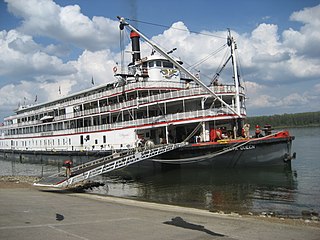
Steamboats played a major role in the 19th-century development of the Mississippi River and its tributaries, allowing practical large-scale transport of passengers and freight both up- and down-river. Using steam power, riverboats were developed during that time which could navigate in shallow waters as well as upriver against strong currents. After the development of railroads, passenger traffic gradually switched to this faster form of transportation, but steamboats continued to serve Mississippi River commerce into the early 20th century. A small number of steamboats are still used for tourist excursions in the 21st century.

Captain Thomas Rea Greene was president of the Greene Line of steamboats.
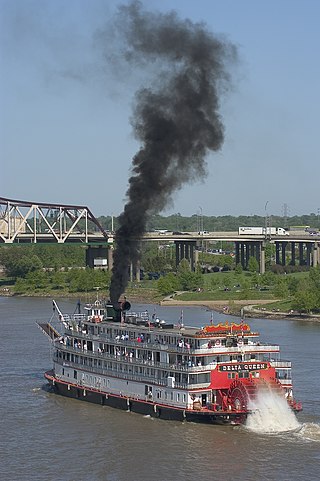
The Greene Line was a line of river steamships along the Ohio River. The name was changed in 1973 to Delta Queen Steamboat Company.
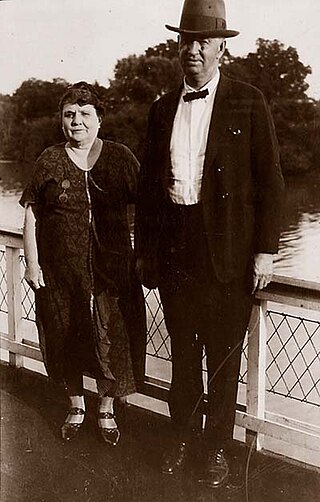
Captain Mary Becker Greene, was steamboat captain of the Greene Line of river steamboats. She was the only female steamboat captain in Ohio.
Queen of the Lakes is the unofficial but widely recognized title given to the longest vessel active on the Great Lakes of the United States and Canada. A number of vessels, mostly lake freighters, have been known by the title.
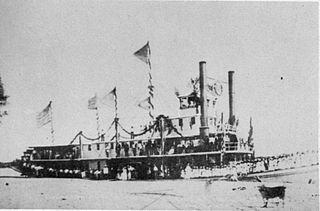
Mohave, the second stern-wheel steamboat of that name running on the Colorado River for the Colorado Steam Navigation Company (C.S.N.C) between 1875 and 1876. It was the first and only double smokestack steamboat to run on the river.
